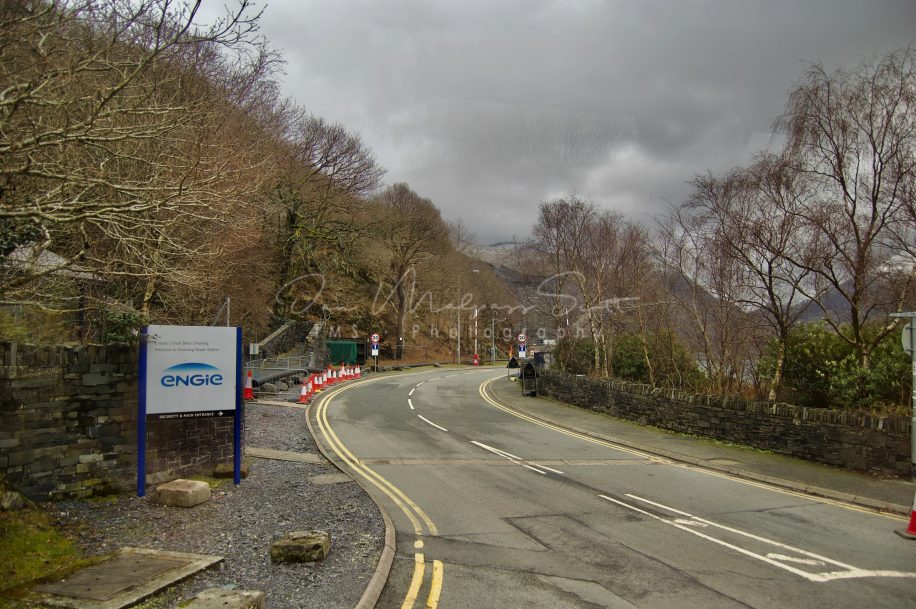![]()
The Dinorwig Power Station, Llanberis, Wales
The Dinorwig Power Station (/dɪˈnɔːrwɪɡ/; Welsh: [dɪˈnɔrwɪɡ]), known locally as Electric Mountain, or Mynydd Gwefru, is a pumped-storage hydroelectric scheme, near Dinorwig, Llanberis in Snowdonia national park in Gwynedd, north Wales. The scheme can supply a maximum power of 1,728 MW (2,317,000 hp) and has a storage capacity of around 9.1 GWh (33 TJ).
The scheme was built at a time when responsibility for electricity generation in England and Wales was in the hands of the government’s Central Electricity Generating Board (CEGB); with the purpose of providing peak capacity, very rapid response, energy storage and frequency control. Dinorwig’s very rapid response capability significantly reduced the need to hold spinning reserve on part loaded thermal plant. When the plant was conceived the CEGB used low efficiency old coal and oil fired capacity to meet peaks in demand. More efficient 500 MW thermal sets were introduced in the 1960s, initially for baseload operation only. Dinorwig could store cheap energy produced at night by low marginal cost plant and then generate during times of peak demand, so displacing low efficiency plant during peak demand periods.
There were plans for a pumped storage facility near Exmoor but it was not built. With the increase of renewables such as wind and solar power, the need for storage is expected to increase to deal with intermittency.
Dinorwig is operated not only to help meet peak loads but also as a short term operating reserve (STOR), providing a fast response to short-term rapid changes in power demand or sudden loss of power stations. In a common scenario (known as TV pickup), the end of a popular national television programme or advertising breaks in commercial television programmes results in millions of consumers switching on electric kettles in the space of a few minutes, leading to overall demand increases of up to 2800 MW.


